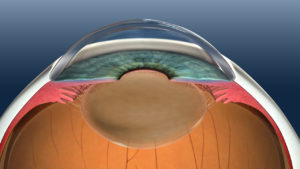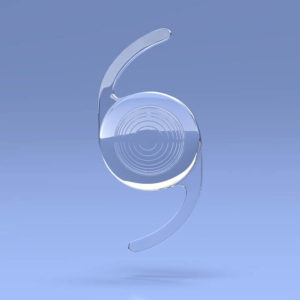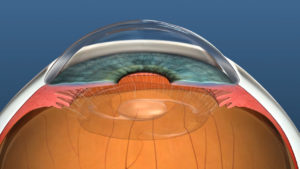At Seibel Vision Surgery, cataract surgery is a state-of-the-art procedure, using a microincisional procedure, called phacoemulsification.
Phacoemulsification uses ultrasound to dissolve the cataract and then a tiny foldable lens is implanted in its place.
Dr. Seibel operates while looking through a highly specialized microscope; he uses the principles of his textbook Phacodynamics to enable a customized procedure for each eye of each individual patient to help insure the gentlest, safest, and most effective operation.


 6. The intraocular lens is folded and passed through the tiny incision where it is then opened (implanted) inside the capsular bag. The lens is inserted via an injector designed to help keep the incision size small – while allowing implantation of a 6 millimeter lens through a 3 millimeter (or even smaller) incision. The springy arms of the IOL, known as haptics, hold the lens implant within the capsular bag. The IOL does not generally require sutures to remain in good position.
6. The intraocular lens is folded and passed through the tiny incision where it is then opened (implanted) inside the capsular bag. The lens is inserted via an injector designed to help keep the incision size small – while allowing implantation of a 6 millimeter lens through a 3 millimeter (or even smaller) incision. The springy arms of the IOL, known as haptics, hold the lens implant within the capsular bag. The IOL does not generally require sutures to remain in good position.
7. The lens is held in the same position as that of the natural lens (cataract) of the eye, within the capsular bag. At this stage, the cataract operation with IOL implantation is complete.
 8. The incision is called self-sealing because the eye’s natural internal pressure holds the incision tightly closed allowing the eye to heal without stitches. The chances of developing new astigmatism (distorted vision) after surgery are significantly decreased by eliminating stitches, which tend to pull the eye’s surface slightly out of its natural shape.
8. The incision is called self-sealing because the eye’s natural internal pressure holds the incision tightly closed allowing the eye to heal without stitches. The chances of developing new astigmatism (distorted vision) after surgery are significantly decreased by eliminating stitches, which tend to pull the eye’s surface slightly out of its natural shape.
The surgery typically takes about 20 minutes and is performed on an outpatient basis. This means that you will have the surgery and then go home, usually around 30 minutes afterwards. Most of the time only local anesthesia is used, so you will be awake for the entire process; a mild sedative will be given to insure that you are relaxed and comfortable. After the surgery, you are taken to the recovery room and then released. You will need someone to drive you home.
Usually not. Although healing usually has rapid improvement in vision with minimal to no discomfort, operating on only one eye enables you to use one eye while the other is healing. Also, even though many patients with cataracts in both eyes often have both done relatively close together, some patients may have enough visual improvement from the first surgery so that they may not feel sufficient symptoms right away to do the other eye. Because of the rapid recovery typical of Dr. Seibel’s advanced techniques, patients who want the second cataract done typically may have their second eye procedure done within a week or even a few days of the first one.
All this information about cataracts and surgery might seem a little frightening to you. It is perfectly normal to be a bit apprehensive before any unfamiliar experience; however, be assured that the great majority of our patients say their surgery was remarkably pleasant, and that pain was not even a consideration. We will do everything possible to make sure you are completely comfortable throughout the entire procedure.
During your surgery, you will be given a relaxant to enhance calmness and neither see nor feel any part of the surgery. The next morning, you will visit with your physician to further cover any concerns you might have. We are here to help.
At Seibel Vision Surgery, your eyes and vision are of paramount importance. To help you make the most informed decisions regarding the welfare of your vision, we are delighted to be of service and are happy to answer any questions you may have.
Please take the time to familiarize yourself with the information contained on this site. We have compiled it especially for you!
Monday, Tuesday, Wednesday, and Thursday
8:30 a.m. to 3:30 p.m.
Friday
8:30 a.m. to 3:00 p.m.
OUR ADDRESS
11620 Wilshire Boulevard, Suite 711
Los Angeles, California 90025
PHONE
(310) 444-1134
FAX
(310) 444-1130
Learn about cataracts and their treatment
Learn more about CataractsGlaucoma, Macular Degeneration,
Medical Eye Exams, and other